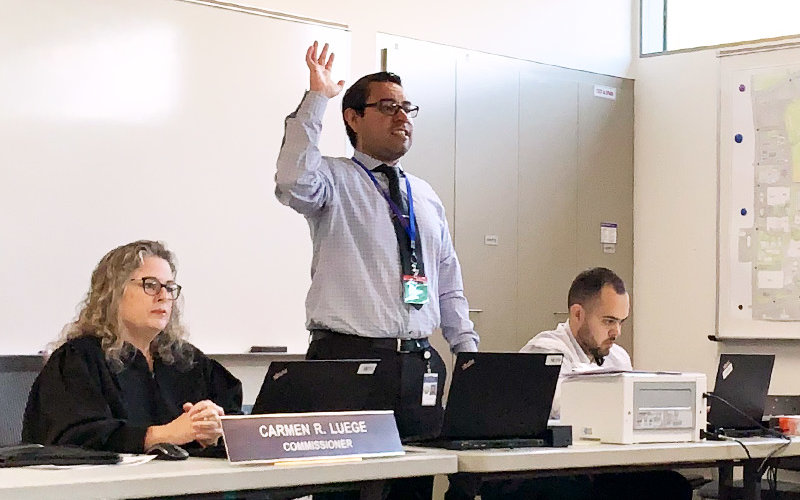
All rise. The court is now in session … at Cal State Fullerton.
For several hours Oct. 29, Operation Mobile Justice demonstrated that the administration of justice could go on … even if a courthouse wasn’t available. In fact, the university was working in collaboration with the Orange County Superior Court, based in Santa Ana, to enact an emergency exercise using the campus emergency operations center as an emergency courtroom.
Emergency drills and exercises are standard practice for hospitals, schools, hotels and many other businesses. But what happens if an emergency — anything from an earthquake to a fire to an envelope filled with what may be anthrax — strikes a courthouse?
During the practice exercise, Superior Court Commissioner Carmen R. Luege heard time sensitive matters according to civil operations standard operating procedures. The cases presented were ones previously heard and adjudicated by the court. During the drill, campus volunteers portrayed those involved in the civil cases.
“The court must be available when parties need judicial intervention,” said Kirk Nakamura, presiding judge of the Superior Court of California, County of Orange. “For example, abused spouses, the elderly and others need restraining orders. The court also may be called on to issue gun violence restraining orders under new laws.
“Moreover, those accused of crimes must be given their constitutionally mandated right to a speedy trial,” Nakamura added.
“The goal, for us and the court, was to simulate as closely as possible, what would be needed during a real event,” said Sue Fisher, emergency manager with University Police. “We looked at logistics, security, systems — all these areas needed to be tested. In the event of a real emergency, if we have to activate this scenario, we want to be well prepared.”
The cases presented during the exercise ranged from a possible eviction to receipt of a temporary restraining order, as well as cases involving permanent restraining orders. There was even a case conducted in Spanish and English (interpreters for both parties were called in). To make the emergency courtroom experience as real as possible, both participants and observers had to sign in and go through standard security protocols that involved checking bags and being “wanded” for potential weapons.
One area in particular, information technology, was tested as courts increasingly rely on computers to provide information on each case. Without that information, cases can’t move forward.
“As with an emergency exercise, we identified areas for improvement, but overall, the court was able to successfully demonstrate, that if needed, we can operate a fully functional courtroom outside our traditional courthouses,” said Justin Mammen, Orange County Superior Court emergency manager. “This exercise further increases our court’s resilience to provide justice even in times of disaster.”